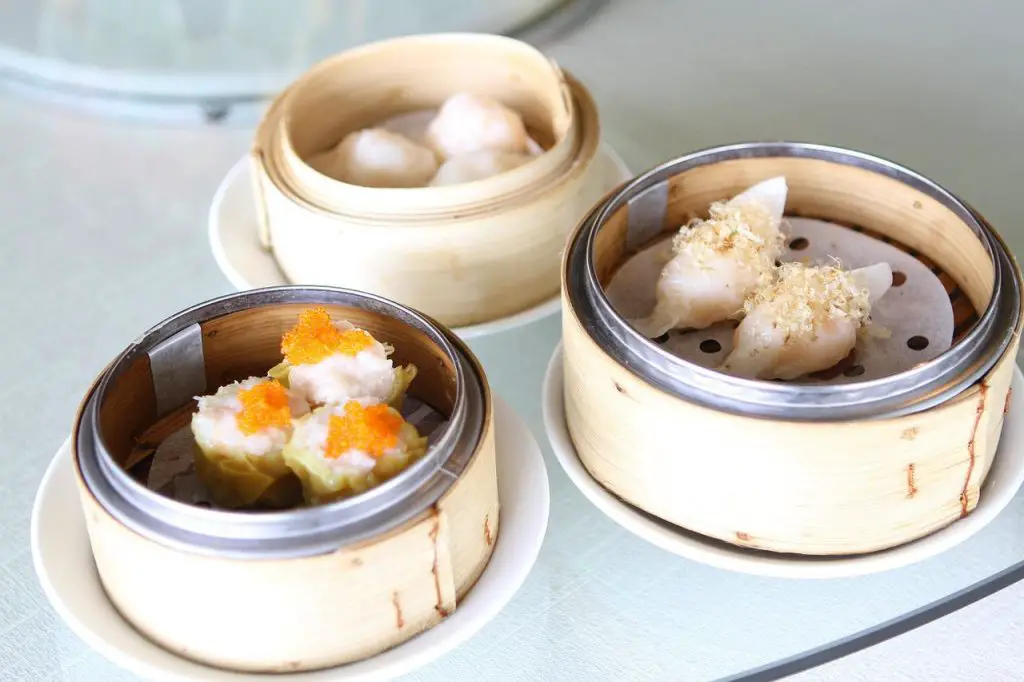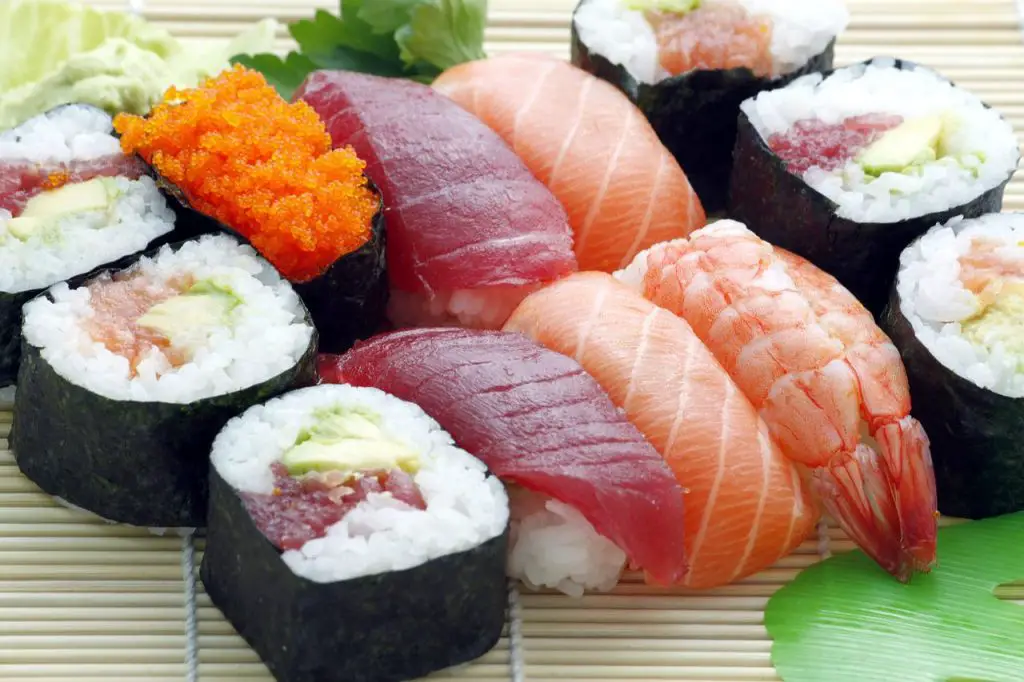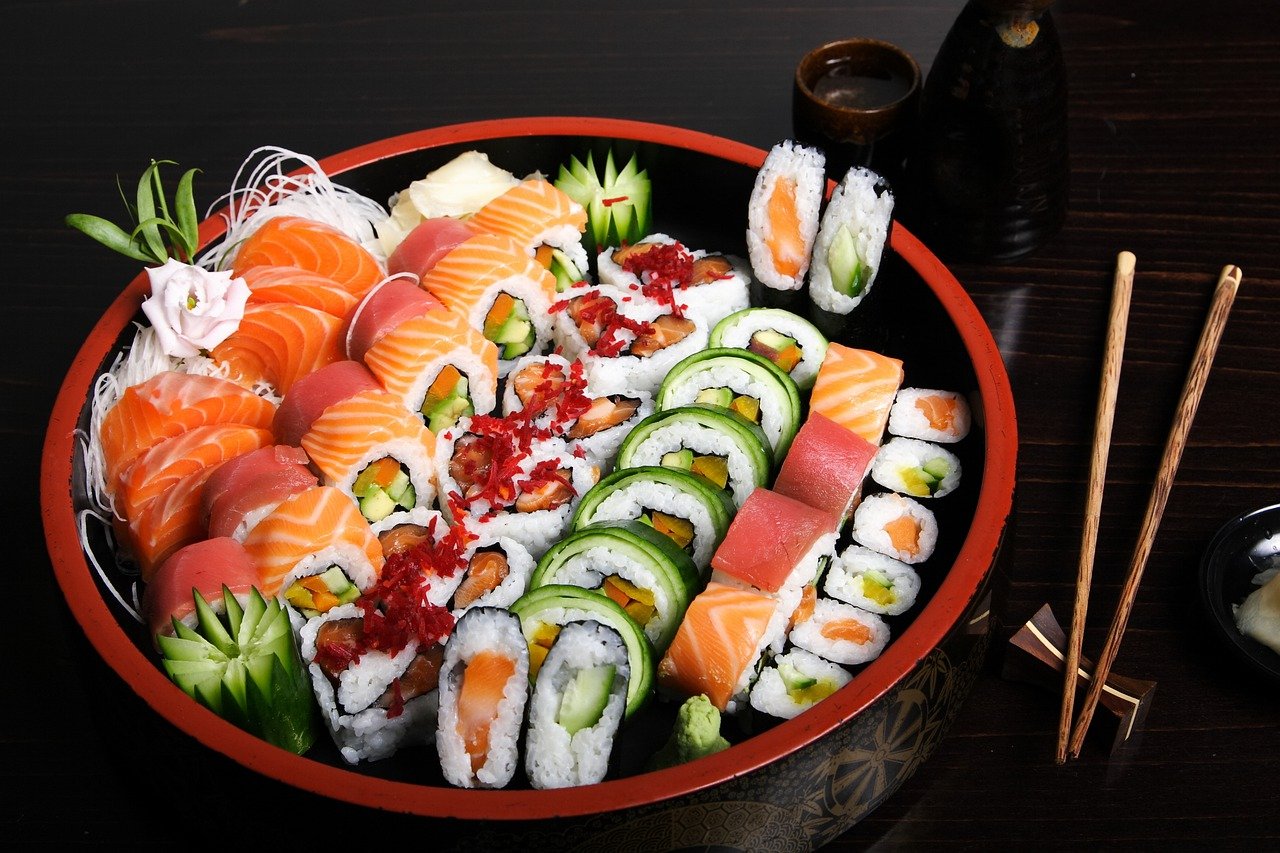Dim sum and sushi have different origins, but they are similar in other ways. Both are served as small portions of dishes meant to be shared among a group. The first fundamental difference is the sushi is Japanese and Dim Sum is Chinese.
They can also be found at restaurants or family-style tables where the dishes are circulated around the table for people to pick up with chopsticks, take a bite, and pass on.
Sushi is traditionally made with vinegar-flavored rice served with raw fish, dried seaweed, soy sauce, wasabi paste or horseradish, and other ingredients.
Dim sum is traditionally made with steamed or baked dumplings filled with meat or vegetables that are often boiled in thin sauces before eating. But what about the differences? Read this article to find out more!


What Is Dim Sum?
Dim sum is a type of Chinese cuisine that is served as small portions of dishes meant to be shared among a group.
It is traditionally made with steamed or baked dumplings filled with meat or vegetables that are often boiled in thin sauces before eating. Often, dim sum will come in a bamboo steamer and there might be at least three different kinds of dim sum to try!
The Origin Of Dim Sum
Dim sum originated as a Cantonese tradition. It was started as a way to serve tea and other small dishes to guests who came for morning visits.
A Shanghainese term (dian xin) for “touch the heart” refers to the idea that one should eat happily, contentedly, and deliciously.
As with many traditions, there are few written records of dim sum’s history.
However, scholars agree that it was created in the 1800s based on stories that circulated about how wealthy families had servants prepare snacks like fresh dumplings or shrimp-filled zongzi (rice dumpling).
The foods were designed to be sampled by guests during social visits.
A funny tongue and in cheek video is below, but highlights the popularity and cultural significance of the 2 dishes in question.
What Is Sushi ?
Sushi is a Japanese dish made of cooked rice with vinegar-flavored rice served with raw fish, dried seaweed, soy sauce, wasabi paste or horseradish, and other ingredients.
It is traditionally made by assembling the sushi in layers on a bamboo mat called a “makisu.”
As you can see from the definition, the traditional way to make sushi is to assemble it in layers on a bamboo mat.
This is why when people are talking about making sushi at home they are usually referring to when they’re using the layer method shown in this picture.
The Origin of Sushi
Sushi is a Japanese dish that consists of vinegared rice and other ingredients like raw fish, eggs, vegetables, and seaweed. The origins of sushi date back to the 19th century.
It was first developed as a way to preserve fish by fermenting it with rice and soy sauce. As time went on, chefs added other ingredients and changed the method for making sushi.
Today, sushi is served as thin rolls or cubes of rice topped with other ingredients like raw fish, vegetables, and egg.
Similarities Between Dim Sum and Sushi
Dim sum and sushi are both served as small portions of dishes meant to be shared among a group.
They can also be found at restaurants or family-style tables where the dishes are circulated around the table for people to pick up with chopsticks, take a bite, and pass on.
Differences Between Dim Sum and Sushi
Dim sum and sushi have different origins. Dim sum is traditionally made with steamed or baked dumplings filled with meat or vegetables that are often boiled in thin sauces before eating.
Sushi, on the other hand, is traditional made with vinegar-flavored rice served with raw fish, dried seaweed, soy sauce, wasabi paste or horseradish, and other ingredients.
Conclusion
It is believed that the origin of dim sum dates back to the 11th century during the Song dynasty. It was originally served as a fast food for travellers on the road.
Sushi is a type of Japanese cuisine. It consists of cooked vinegared rice, sometimes with other ingredients, which are served with raw fish or vegetables.
The origin of sushi dates back to the 8th century. It was originally developed as a means to preserve fish during times of famine.
There are many similarities between these two cuisines, but there are also some differences. For example, both dim sum and sushi are an Asian-style dish which is usually served for lunch or dinner and in dim sums case, breakfast.

